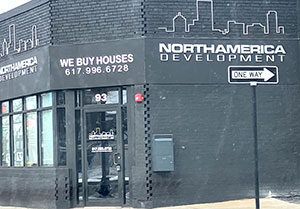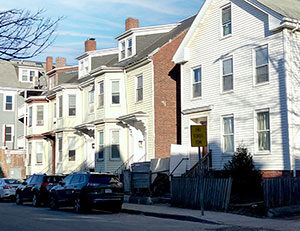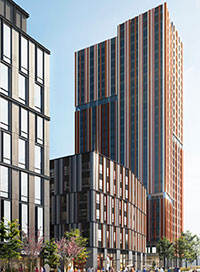(The opinions and views expressed in the commentaries and letters to the Editor of The Somerville Times belong solely to the authors and do not reflect the views or opinions of The Somerville Times, its staff or publishers)

By State Senator Pat Jehlen
Somerville has submitted a home rule petition, S2545, to allow the city to regulate rents in buildings of 3 or more units not occupied by the owner. This newsletter is the first of two based on my testimony in favor of the bill.
I lived in Somerville during rent control (1971-78). Our family lived in a rent-controlled apartment in Somerville. Fortunately for us, we were able to buy a home in Somerville when a landlord sold two houses because recent large rent increases were rolled back. Some information about the effects of rent control in Somerville in the next newsletter is from documents from that time.
This is an emergency
Right now, in Somerville and other communities, families are being displaced and neighborhoods disrupted by large rent increases coupled with stagnant and inadequate pay for many essential workers.
We often see exorbitant rent increases of $500-$1000 a month. These usually follow a property being sold for cash to a large multi-state corporation, and are equivalent to an informal eviction. A recent report by the Metropolitan Area Planning Council (MAPC), Homes for Profit, Speculation and Investment in Greater Boston, shows how prevalent this is. My last newsletter summarizes that report. MAPC found that potential homebuyers are frequently out-bid by investors, who can pay cash with no conditions. These investors then raise rents dramatically, up to 100%, effectively evicting long-term tenants. Or, unless there is a lease in place, they simply evict them without cause. Data shows that since August 2022, eviction rates in Massachusetts have been higher than pre-pandemic, with non-payment evictions up 58%.
The problem is worst in East Somerville, as in similar neighborhoods with high-density, lower-priced, and high shares of renters and immigrants). In East Somerville, over half the triple-deckers and almost 2/3 of 2-families were sold to investors.
 Triple-deckers were traditionally a path to homeownership for working-class families. Now they – and singles and 2-families – are each transformed into 3 luxury condos for well over $1 million each, which would require an annual income of more than $225k.
Triple-deckers were traditionally a path to homeownership for working-class families. Now they – and singles and 2-families – are each transformed into 3 luxury condos for well over $1 million each, which would require an annual income of more than $225k.
These homes are permanently changed into homes far beyond the means of middle-class families.
Last time I asked, there were 67 unhoused children in Somerville Public Schools; 20 in shelter and the rest doubled up, often one family per bedroom. The main cause of homelessness was rent increases. Many other families have left Somerville, often losing school connections and the ability to get to work.
Not all communities need rent stabilization
People in Massachusetts have less local control over decisions that affect their lives than in most states. They have to ask the legislature for permission to change their taxes, their form of government, the number of liquor licenses, and much more, including the ability to regulate rent increases.
Yet, communities’ needs are very different. Not every community needs or wants rent stabilization, but we should give those that need it the opportunity for local decision making.
When rent control authorization was repealed by a 1994 ballot question, 51-49, the communities that had it all voted to keep it but were outvoted by residents of other communities.
Building more housing is necessary but not sufficient
Building new units, especially affordable ones, is crucial, but it will be many years before increased housing production actually reduces rent burdens enough to make it possible for workers to live here. So far, while we are doing everything possible in Somerville to increase new housing units, both affordable and market rate, increased production has not lowered rents or stopped unaffordable increases.
Somerville, the most densely populated city in New England, has 20% inclusionary zoning, no single-family zoning, and Accessory Dwelling Units (ADUs) as of right. You can see Somerville’s increases in density at Assembly Row, with over 1400 new condos and apartments in several buildings of 20 or more stories. Union Square has two new buildings, 25 and 6 stories, which will have 450 units, 87 of them affordable. Another 450 apartments in 24-story buildings are going up in Boynton Yards. The Clarendon Hill development will add 375 units as well as rebuilding a public housing project.
Despite that, in the past 5 years, average rent increased by 34-58%, or up to 3 times inflation. And from 2021 to 2022, the median sale price went up 44%. (p. 105)
Rent Stabilization in Somerville is insufficient but necessary
It will take a long time and a lot of money to build the 200,000 units we believe Massachusetts needs. Gov. Healey’s proposed Affordable Homes Act will cost $4 billion and expects to produce 40,000 homes over the next five years.
In the meantime, as prices rise far faster than incomes, families lose homes, children lose familiar schools, workers lose jobs when they have to move, and neighborhoods lose the social capital of connections.
Rent stabilization and other tools to slow the expansion of the speculative market are not a total cure for the housing crisis, but we need them now to stop the damage to many people and communities like ours.
Coming up next : Does rent stabilization stop new construction? Does it affect homeownership? What other ways can we keep people stably housed?

 https://www.portersquarebooks.com/
https://www.portersquarebooks.com/













Reader Comments